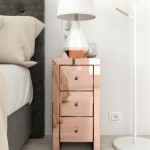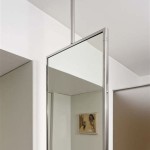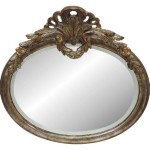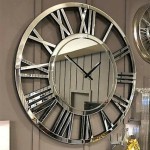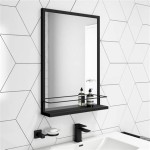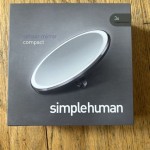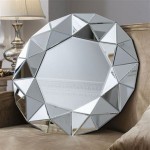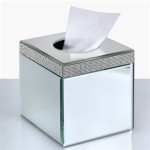Best Glue for Mirror Frames
Selecting the appropriate adhesive for securing a mirror to its frame is crucial for both aesthetics and safety. The wrong glue can lead to unsightly gaps, weakened adhesion over time, or even damage to the mirror's reflective backing. This article explores the best glue options for mirror frames, considering factors like material compatibility, bonding strength, and ease of application.
Understanding the Demands on Mirror Frame Adhesive
Mirror frame adhesives face unique challenges. They must contend with the weight of the mirror, potential vibrations, and environmental factors like temperature and humidity fluctuations. Furthermore, the adhesive must not damage the mirror's delicate silvering, and ideally, allow for some adjustability during application.
Key Adhesive Properties to Consider
Several key properties determine an adhesive's suitability for mirror framing. Bond strength is paramount for secure and long-lasting adhesion. Flexibility is also crucial, allowing the bond to absorb stress from minor movements and temperature changes, preventing cracking or separation. Finally, the adhesive's cure time and ease of application impact the overall project efficiency.
Top Adhesive Choices for Mirror Frames
Several adhesive types stand out for their effectiveness in mirror framing. These include neutral cure silicone sealants, specialized mirror adhesives, and construction adhesives.
Neutral Cure Silicone Sealant
Neutral cure silicone sealants offer excellent adhesion to various surfaces, including glass, wood, and metal. They are highly flexible, accommodating movement and preventing stress cracking. Their resistance to moisture and temperature fluctuations makes them ideal for bathroom environments. Importantly, neutral cure silicone is non-corrosive, ensuring it won't damage the mirror's reflective backing. However, cure times can be relatively long, requiring careful clamping and support during the bonding process.
Specialized Mirror Mastics
Formulated specifically for mirror mounting, mirror mastics provide a strong, durable bond. These adhesives are typically designed to be non-corrosive to mirror backing and offer good gap-filling properties. They often have faster cure times compared to silicone sealants, minimizing the need for extended clamping. However, mirror mastics tend to be less flexible, making them less suitable for applications subject to significant movement or vibration.
Construction Adhesives
Certain construction adhesives, particularly those based on modified silicone or polyurethane, can be suitable for mirror framing. These adhesives offer high bond strength and excellent gap-filling capabilities. They also exhibit good flexibility and resistance to environmental factors. However, it is crucial to select a variant that is specifically labeled as safe for mirrors and non-corrosive to mirror backing. Some construction adhesives may require specialized application tools.
Choosing the Right Adhesive for Your Project
Selecting the most suitable adhesive depends on several factors. The materials of the frame and the size and weight of the mirror are primary considerations. For heavy mirrors, a high-strength adhesive like a construction adhesive or specialized mirror mastic may be necessary. For lighter mirrors, a neutral cure silicone sealant can provide adequate bonding. The environment where the mirror will be installed also plays a role. In high-humidity areas like bathrooms, moisture-resistant silicone sealants are recommended.
Surface Preparation and Application Techniques
Regardless of the adhesive chosen, proper surface preparation is essential for optimal bonding. Both the frame and the mirror edges should be clean and dry. Dust, dirt, and grease can significantly weaken adhesion. Applying the adhesive in a consistent bead or pattern ensures even distribution and prevents voids. Clamping or bracing the mirror during the curing process maintains proper alignment and contact until the bond fully develops.
Safety Precautions
When working with adhesives, especially those containing solvents, ensure adequate ventilation. Wear protective gloves and eye protection to prevent skin and eye irritation. Follow the manufacturer's instructions carefully for safe handling and disposal of the adhesive and its packaging. Carefully consider the weight of the mirror and ensure appropriate support mechanisms are in place during installation to prevent accidents or damage.
Long-Term Mirror Frame Maintenance
Once the mirror is securely bonded to its frame, minimal maintenance is typically required. Regularly cleaning the frame and mirror with a mild detergent and water can help maintain its appearance and prevent the buildup of dirt and grime that could potentially weaken the adhesive bond over time. Avoid using harsh chemicals or abrasive cleaners that might damage the frame material or the adhesive itself.
What Is The Best To Use Glue Mirrors A Wall Quora

How To Use Mirror Adhesive Silicone

Mirror Frame Diy How To Update A Basic Bathroom Our Faux Farmhouse

Easy Diy Stick Framed Mirror That Looks Expensive

Diy Stick On Mirror Frame Sawdust Sisters

How To Frame A Mirror Sand And Sisal

Mirror Frame Diy How To Update A Basic Bathroom Our Faux Farmhouse

Diy Bathroom Mirror Frame Without Removing Clips Her Happy Home

Framing A Bathroom Mirror Tempting Thyme

How To Frame A Mirror

